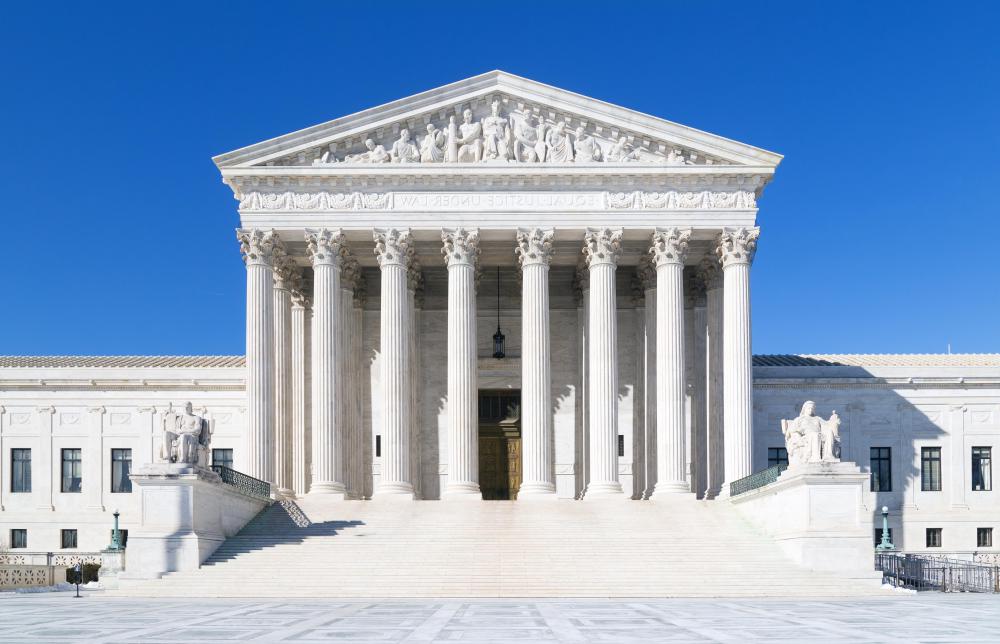At WiseGEEK, we're committed to delivering accurate, trustworthy information. Our expert-authored content is rigorously fact-checked and sourced from credible authorities. Discover how we uphold the highest standards in providing you with reliable knowledge.
What is a Concurrent Resolution?
A concurrent resolution is a legislative method generally used by the two houses of the United States Congress to express an opinion on a matter or to create or change rules that apply to both houses. Concurrent resolutions do not have the authority of law and do not have to be approved by the president. Both houses of Congress, the House of Representatives and the Senate, must approve of the resolution before it is passed. These resolutions are included in the bill number either as H.Con.Res., if they originate in the House, or S.Con.Res., if they originate in the Senate.
A concurrent resolution should not be confused with joint resolutions or bills, both of which require the approval of the president and have the force of law. Concurrent resolutions do not have the power of law because they are not approved by the president. They simply apply to matters of Congress or express a collective opinion.

Calling joint sessions is one instance in which a concurrent resolution is used. Joint sessions commonly are adopted to hear the president's State of the Union address and other messages from the president. Congress also will pass a concurrent resolution for administrative issues such as creating joint committees, authorizing congressional documents to be printed or setting the date for Congress to adjourn.

These resolutions also are used when requesting that the president return a bill before it is vetoed or signed. Some of the many other functions of concurrent resolutions are initiating the budget process, creating temporary joint committees and providing a recess or adjustment of the legislature for longer than three days. If both houses of Congress censure the president, it is considered a concurrent resolution.
When Congress wants to express its opinion on foreign or domestic policy, it will use a concurrent resolution. For example, if Congress wanted to congratulate a country on the anniversary of its independence, it would issue a concurrent resolution. Another example of Congress communicating its sentiments with concurrent resolutions is when it congratulates professional teams for winning championships.
There was a time after the Vietnam War and Watergate scandal when Congress wished to limit the power of the executive branch. Congress began using concurrent resolutions to override presidential vetoes. This action was called a legislative veto. Practicing legislative vetoes through using concurrent resolutions, however, was ended with the Supreme Court case Immigration and Naturalization Services v. Chadha in 1983.
AS FEATURED ON:
AS FEATURED ON:












Discussion Comments
I work for a non-profit organization that promotes research into rare genetic diseases. We often lobby Congress for support of our mission through a concurrent resolution.
Congress has so far recognized our work through resolutions several times. It's a really good way to gain recognition and to get our name out in the field and on Capitol Hill.
Of course, the goal is to ultimately have bills passed in support of research into these diseases. But a concurrent resolution is the first step. At least we know that we have Congressmen and women who support our mission.
The public can support concurrent resolutions too. I know that there was a concurrent resolution to prevent genocide last year. The public was asked to express their support of the resolution.
So it should not be understood as something that is exclusively for Congress. Congress has its opinion, but the public does too. You can express that opinion not just for bills and laws but for concurrent resolutions as well.
Concurrent resolutions do not have the impact that joint resolutions have. But I still think that it can be very influential.
If for example, there is an organization or lobby trying to get attention to an issue or policy, the opinion of both the House and Senate can be very important. Concurrent resolutions can give lobbies an idea about how the House and Senate will vote on an issue in the future. It shows that both the House and Senate are in agreement, since it is approved by both.
It's also a good way to warn other countries on important issues like human rights.
Post your comments